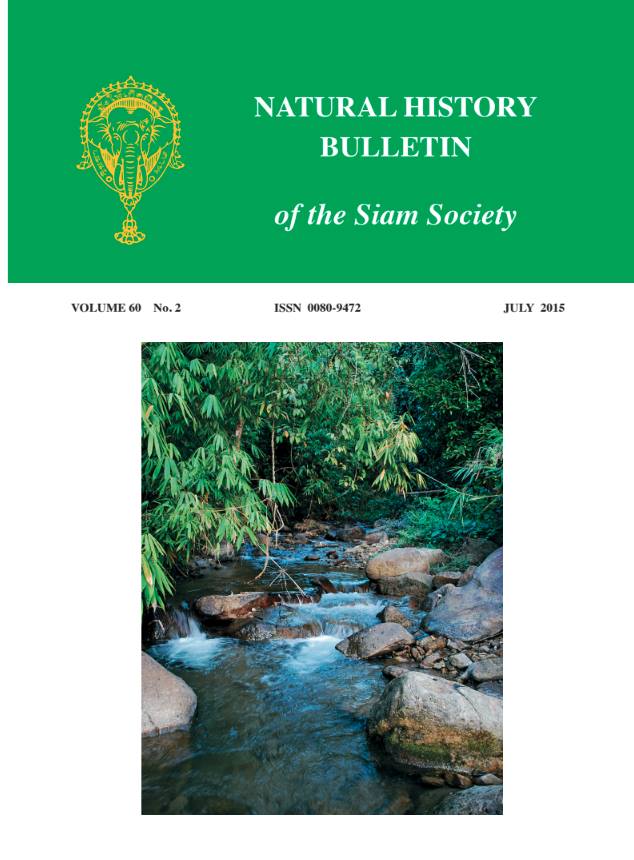Shell utilization by the land hermit crab Coenobita rugosus (Anomura, Coenobitidae) with noteS on the first record of bivalve shell use
Main Article Content
Abstract
Understanding of the use of shells as an indispensible resource for land hermit crabs increases our understanding of their life history. We investigated shell utilization of the land hermit crab Coenobita rugosus from April 2011 to March 2012 on Phuket Island in the Andaman Coast of Thailand. A total of 1, 322 individuals of C. rugosus were collected (711 males, 507 non-ovigerous females and 104 ovigerous females) using multiple quadrat sampling, and were found to use 63 molluscan shell species, including 62 gastropod shell species from 20 families and one bivalve shell. The diversity of shells used increased with body size from small to medium-sized crabs, but decreased in larger crabs. The most commonly occupied shell species was N. albicilla (19.6 % of crabs). However, N. albicilla used by C. rugosus was not the lightest shell species based on the ratio between internal volume and weight following the “energy saving hypothesis”. Globose shells and those with ovate apertures were the most commonly used shell types. The shell utilization patterns of C. rugosus at the study site were different among reproductive stages. Furthermore, strong correlations between internal volume and aperture size of occupied shells and hermit crab characters suggest that the shell internal volume and size of aperture are the main determinants for shell utilization of C. rugosus. Consequently, the pattern of shell utilization of C. rugosus is seemingly similar to those of other coenobitid species based on the frequent occupation of certain shell species and shapes. Additionally, the great shell diversity used by this population of C. rugosus compared with other conspecific populations and congeneric species may reflect more plasticity in shell utilization due to the high diversity of shell resources in the tropical habitats in the Indo-Pacific region.


